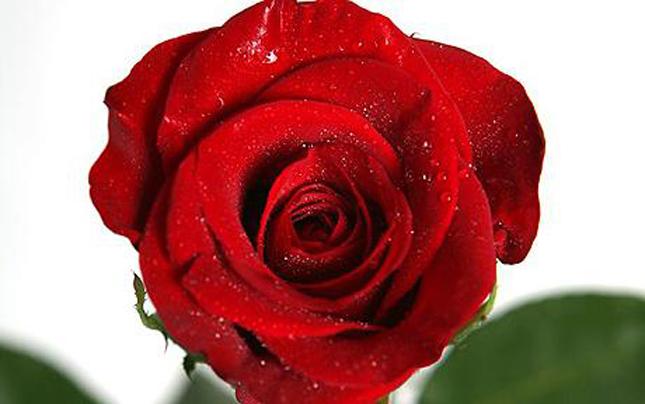Roaring Red
A savvy commercial photographer once shared the secret of his success. “It’s simple,” he confided. “I always try include something red in every photograph.”
?
Red. It’s the color of sunsets, the color of passion and, in China, the color of good luck. Red is the badge of courage, the color of royalty, of power and of sex. Apparently red is more “primary” than the other two colors in its category, yellow and blue.
?
Here’s something new about red: According to the results of a study published in the latest issue of the Journal of Experimental Psychology, women find men in red to be more attractive, more powerful and more sexually desirable.
?
In the study, women were asked to rate the status and sexual desirability of men pictured wearing different colored clothing. They rated the men wearing red as being higher status and more likely to earn a better living, as well as more appealing.
?
Even when the comparison was made between pictures of men merely surrounded by a red matte with those of men surrounded by a white matte, the women rated the men surrounded by red to be more pleasant and more attractive. The difference was small —just one point on a nine-point scale — but it was statistically significant. Remarkably, the appeal of red held true for women in the U.S. and England, as well as in Germany and China.
?
The authors speculate about why women might prefer red. It seems other female primates do, too. The authors say that the red preference goes even further down the evolutionary scale, with some red-roaring crustaceans, fish and birds!
?
Are women just hardwired to be attracted to red by the blind call of biology? Or is it culture that draws their attention, having taught us to associate red with power and status and fame? Who hasn’t watched the glamorous stars walk the red carpet to get to the coveted prize, the Oscar?
?
Men write songs about women in every color. Their Devil can have a Blue Dress On. But if these researchers are to be believed, women have eyes for red.
?
So, men, if you’re planning to buy something new for the new season, keep science in mind when considering your wardrobe choices. That shade of brown may bring out your eyes, and black may make you look slimmer, but a little touch of red is where you want to be; it will get her attention and make you look your best.
?
Although we can’t be sure of the reasons, we now know this to be true: women go for the guy in the red tie.
Love Potion #9: The Dark Side of Love
Oxytocin is the original love potion.
Oxy (it’s the “love hormone,” so I’ll give it a friendly nickname) has its way with us by working down deep, below consciousness, beneath intuition. When oxy speaks to us, we “just know” it’s true. Released in the brain, this love hormone generates trust and empathy and promotes bonding throughout our lives. It encourages intimacy. It increases altruism. Oxy makes us act generously to strangers, and romantically toward lovers.
?
Oxytocin is released during childbirth. It was first identified by its association with lactation, and the deep, adoring bond of mutuality between a mother and her breastfeeding infant. The discovery of the love hormone made the magic of mother-infant bonding just a little less mysterious, but no less marvelous. Not just for moms and little babies, oxy also plays a role in sex, friendship and social ties of many kinds. Oxytocin is the organic love potion we make ourselves.
?
The more we learn about the love hormone, the better it looks. It promotes monogamy. It makes us feel secure. It brings us contentment in our relationships. As they once used to say in L.A., it’s all good.
?
Or is it? Centuries of poetry warned us of something that biological research recently confirmed: love has a dark side, too.
?
When subjects inhaled oxytocin before playing a competitive game they became more envious when their opponent won, and more gloating when they were ahead. Although it may not seem like a match made in heaven, love and jealousy are the conjoint oxytocin twins.
?
The hormone plays a role in international affairs as well, a recent Dutch study suggests. Even as it influences people toward self-sacrifice on behalf of their own group, it also encourages them to be aggressive against a threatening outgroup. Oxytocin is why conflicts between groups escalate when the other group is perceived as threatening. Happily, when physical barriers or other means of separation makes them feel less threatened, conflict escalation is less likely.
?
Here in D.C., where politics rule, we ignore biology at our peril. Biology is not essentially political, and it does not take sides. But it does help point a way. What are our bodies telling us, and what does science say, when it comes to playing it right in love, in friendship, even in international relations?
?
Since I have no wish to be a guru, I will warn you that the answer is deceptively simple: it’s more of a direction than a destination.
?
The answer is balance. Philosophers and poets would agree, yes, being close is good — oh yes, very good — but closer is not always better. We each need to keep our balance with the light and dark sides of love. We need to season oxytocin’s closeness with the right amount of distance. The very same hormone that inspired Shakespeare’s sonnets of love is the one that reminds us to heed Robert Frost’s wise advice, as well: Good fences make good neighbors.
Renee Garfinkel, Ph.D. is a clinical psychologist practicing short-term, solution-oriented psychotherapy in downtown D.C. She is affiliated with the Institute for Crisis, Disaster and Risk Management at The George Washington University. For more information, check out therapists.psychologytoday.com/rms/69148 or www.sleep-dc.com.


